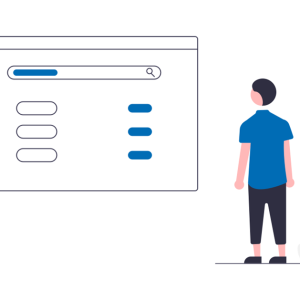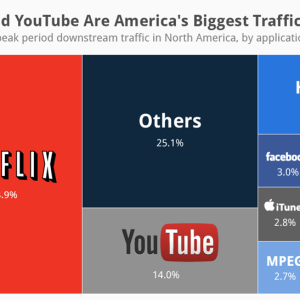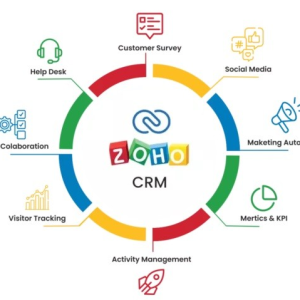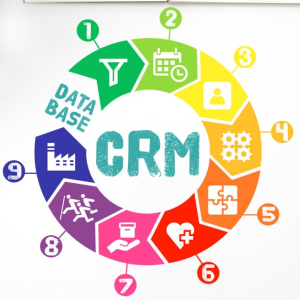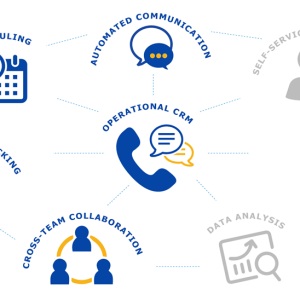Introduction
As digital assistants increasingly pervade the tech landscape, chatbots are becoming ever more ubiquitous. No longer are they mere novelties, for nowadays it is commonplace to encounter a chatbot as a fixture of a company’s customer service team, irrespective of whether it is a small-scale business or a grand enterprise.
Yet, chatbots’ utility extends far beyond the sphere of elementary customer service. Thanks to sentiment analysis, chatbots are now capable of performing functions ranging from marketing and customer support to preventing fraud. In the subsequent discourse, we will delve into the intricacies of sentiment analysis, its significance, its operational modus operandi, how to set it up, and a multitude of other facets.
What Is Sentiment Analysis?

Sentiment analysis, a process of immense import, serves as the gauge of text’s positivity, negativity, or neutrality. Diverse mechanisms can be employed to execute this process, but it usually entails deploying some variety of natural language processing (NLP) to scrutinize the text.
Following the analytical phase, the text is sorted into one of three categories: positive, negative, or neutral. Numerous techniques can be utilized to undertake this classification process, but, typically, a supervised learning algorithm is the preferred choice.
Why Is Sentiment Analysis Important?
Sentiment analysis is an intricate field that carries a significant weight in several areas. Arguably the most apparent rationale for its importance is its ability to evaluate customer sentiment. This feature is valuable for many reasons, including:
- Identifying dissatisfied customers: With the utilization of sentiment analysis, businesses can effectively recognize dissatisfied customers. The ability to identify them can help enterprises to reach out to them promptly and resolve any grievances before they snowball into more significant issues.
- Improving customer service: Through consistent monitoring of customer sentiment, businesses can obtain valuable insights into areas of their customer service that need improvement.
- Developing new products and services: By utilizing sentiment analysis, businesses can gain valuable insights into the specific needs and desires of their customers, with which they can create products that resonate with their audience.
- Promoting positive sentiment: By identifying a satisfied customer, businesses can share their positive review on social media or incorporate it into their marketing strategy.
- Avoiding negative sentiment: Sentiment analysis can also be used to circumvent negative sentiment. By recognizing an unhappy customer, businesses can take appropriate measures to resolve any issues, either by reaching out to the customer or by modifying the product to prevent future problems.
In addition to being beneficial for businesses, sentiment analysis also carries significant importance for individuals.
How Does Sentiment Analysis Work?
Multiple methodologies are available for conducting sentiment analysis, but the preponderant modus operandi involves deploying natural language processing (NLP). NLP represents a discipline of computer science that focuses on the interplay between machines and human languages.
Text is the typical target for NLP’s analytical apparatus. Such apparatus may undertake sundry tasks, such as part-of-speech tagging, Named Entity Recognition (NER), and, of course, sentiment analysis. The primary function of sentiment analysis involves utilizing NLP to scrutinize text to establish its overall sentiment.
Following the analytical process, the text is assigned to one of three categories: positive, negative, or neutral. Diverse techniques can be employed to undertake this classification process, but, commonly, a supervised learning algorithm is the preferred method.
Supervised learning is a machine learning technique whereby a model is trained on data that has been designated as either positive, negative, or neutral. Once the model has completed training, it can then be used to classify new text pieces.
A multitude of supervised learning algorithms exists that are suitable for conducting sentiment analysis. The most widely used ones include support vector machines (SVMs), logistic regression, and Naive Bayes.
So, you are now apprised of the significance of sentiment analysis and how it works. But how can you incorporate it into your chatbot?
Implementing Sentiment Analysis in Chatbots

While crafting your inaugural chatbot, you may be enticed to adopt a rudimentary rule-based approach. However, this may not represent the optimal choice, particularly concerning sentiment analysis.
In lieu of this approach, you should ponder deploying a machine learning-based approach. Such an approach necessitates possessing labeled training data, but the fruits of your labor will be splendid.
Here are a few steps to help you get started:
- To embark on training a sentiment analysis model, two critical steps must be taken into account. Firstly, data collection, which can be obtained from a myriad of sources like social media, customer reviews, and survey responses, among others. Secondly, data preprocessing, which involves an array of tasks such as data cleaning, removal of stopwords, and lemmatization of text.
- For instance, to effectively preprocess the data, one must start by removing stopwords. Stopwords are mundane words that are frequently used in a language but carry minimal meaning. Examples of English stopwords include “the,” “a,” and “is.” Moreover, lemmatizing the text is crucial. Lemmatization is the process of converting a word to its base form. For instance, the words “cats,” “catlike,” and “catty” all collapse into the base form “cat.”
- Upon completing the data preprocessing step, the subsequent stage involves training the sentiment analysis model. In this regard, there exists a plethora of supervised learning algorithms that can be utilized for this purpose. Some of the widely adopted supervised learning algorithms include:
- 3a. Support vector machines (SVMs): SVMs stand out as a versatile machine learning algorithm that can be applied to accomplish both classification and regression tasks with remarkable precision.
- 3b. Logistic regression: Logistic regression emerges as a common type of supervised learning algorithm that is well-suited for classification tasks, whereby it is used to predict a categorical outcome based on one or more predictor variables.
- 3c. Naive Bayes: Naive Bayes is another widely used supervised learning algorithm used for classification tasks.
- To train a sentiment analysis model that can accurately gauge customer sentiment in your chatbot, you need to follow several crucial steps. Firstly, you need to collect data from various sources like social media, customer reviews, survey responses, and more to train your model. Once you have the data, you need to preprocess it by cleaning the data, removing stopwords, and lemmatizing the text to ensure that the data is consistent and can be easily analyzed.
- During the training process, you can use various supervised learning algorithms like Support vector machines (SVMs), Logistic regression, and Naive Bayes to train your sentiment analysis model. After the training process, you need to evaluate your model to ensure its accuracy by using metrics such as accuracy, precision, recall, and F1 score. Tools like Sklearn’s classification report can help you calculate these metrics.
- If your model is not performing as expected, you can improve it by collecting more data, preprocessing the data differently, or trying different supervised learning algorithms. Once you have a sentiment analysis model that meets your requirements, you need to implement it in your chatbot. This can be done using libraries like NLTK or SpaCy, and it will help you provide a better user experience and engage with your customers more effectively.
Sentiment analysis involves a rigorous analysis of a text’s disposition, thereby determining if it is positive, negative, or neutral. The significance of this lies in its capability to discern how individuals feel about a specific subject matter. What’s more, it has diverse applications, from boosting customer service to forestalling fraud, and beyond.
How Can Businesses Benefit From Sentiment Analysis In Chatbots
Sentiment analysis can offer businesses a valuable tool for comprehending customer behavior and enhancing their overall experience.
- The deployment of chatbots can unlock a wealth of insights for businesses across various fields. One such area is market research, where chatbots are capable of collecting customer feedback that can be analyzed using sentiment analysis. This feedback can then be used to enhance the quality of products and services.
- Furthermore, chatbots are highly effective at conversation mining. By collecting customer data from chat conversations, businesses can analyze this data to identify areas for improvement in their customer service or target marketing campaigns more effectively.
- Another exciting use case of sentiment analysis in chatbots is in fraud prevention. Sentiment analysis can be instrumental in identifying the likelihood of fraudulent activity by customers. By monitoring customer sentiments such as anger or frustration, businesses can detect and prevent fraud more efficiently.
- In addition, chatbots can monitor social media platforms to gauge customer sentiment. This information can be used to enhance customer service or to understand public perception towards a product or service.
- Lastly, sentiment analysis can be utilized for brand reputation management. By analyzing customer sentiment, businesses can identify areas of concern and take corrective actions to address them, such as making improvements to their products or services.
Investing in sentiment analysis is a smart move for businesses looking to stay ahead of the curve. The endless benefits of using sentiment in chatbots can help improve customer satisfaction and increase brand loyalty.
Challenges Of Using Sentiment Analysis In Chatbots
One of the most vexing quandaries associated with leveraging sentiment analysis is comprehending the context of a sentence. For instance, if an individual utters, “I’m not happy with this product,” it’s not immediately apparent whether they are incensed or simply underwhelmed. Enter natural language processing (NLP), an artificial intelligence subset that enables chatbots to decipher the context of a sentence.
However, apart from this, several other hurdles may surface with sentiment analysis. Although none of these are insurmountable, a few preventive measures may aid in mitigating these challenges, which encompass:
1. Sentiment analysis relies on training data
Sentiment analysis is a tricky business. First and foremost, it relies on training data, which must be top-notch and genuinely representative of the real world for the model to perform accurately. If the training data is poor, the model will struggle to make accurate predictions.
2. Models can be biased
Another issue that can plague sentiment analysis models is bias. If the training data does not reflect the diverse population that the model will be applied to, it can’t provide reliable predictions for different groups.
3. Sentiment analysis is subjective
Moreover, sentiment analysis is subjective. Positive or negative sentiments can differ among individuals, leading to difficulty creating a universally accurate model.
4. Models can be overfit
Additionally, models can be overfit. If the training data is too limited, the model can become overfitted, resulting in it being unable to predict sentiments for new data.
Despite these challenges, sentiment can be a potent tool for businesses, especially when it comes to enhancing customer service, identifying fraudulent behavior, and more. With the help of NLP and high-quality training data, these hurdles can be overcome.
FAQs On Sentiment Analysis
1. If I use sentiment analysis in chatbots, will it be accurate?
Sentiment analysis can definitely be a valuable asset for enhancing customer service, mitigating fraud risks, and more. However, it’s important to note that there are a number of hurdles that need to be surmounted in order to achieve optimal accuracy rates. These can include obtaining high-quality training data and leveraging NLP techniques to gain context around specific sentences.
2. When should I use sentiment analysis in chatbots?
To leverage the power of sentiment, chatbots should be employed when it’s vital to comprehend customers’ attitudes and emotions towards a product or service. This insight is instrumental in refining and optimizing the customer experience.
3. Does this require a lot of training data?
The training data required for sentiment analysis is a sizable chunk that demands a good amount of effort to ensure that the results are reliable. Without proper data that is original, high quality, and reflective of the real world, the resulting model may fail to produce intended outcome.
4. Is sentiment analysis subjective?
Yes, sentiment analysis is a subjective experience that may differ from person to person depending on their trail of thought and mindset.
5. How do you write a chatbot conversation with sentiment analysis?
Machine learning (ML) and natural language processing (NLP), helps to scrutinize statements and contextualize them to align with the viewpoints of your audience, along with improving customer service, preventing frauds, and more!
6. Is sentiment analysis easy?
Sentiment analysis is not without its share of hurdles. One of the most prominent obstacles is acquiring ample, high-quality training data that truly represents the complexities of the real world. Furthermore, accurately grasping the context of sentences requires a certain level of sophistication in natural language processing (NLP). Nonetheless, if these challenges are overcome, sentiment analysis can become a highly effective tool for enhancing customer service, detecting and preventing fraud, and providing a host of other valuable applications!
Conclusion
In this article, we explored the intricacies of sentiment analysis, ranging from its definition to its implementation in chatbots. We delved into the significance of sentiment analysis and some of the obstacles that you must surmount. However, in spite of these impediments, sentiment is an influential tool that can boost customer service, deter fraud, and more.
With the right tools at hand, such as high-quality training data and NLP, you can easily overcome the obstacles of sentiment analysis. These challenges include identifying the context of a sentence and the subjective nature of sentiments.
If you’re seeking guidance in starting your journey towards utilizing chatbots with sentiment analysis, 12 Channels has the chatbot experts you need. Just head over to our website to find our contact information and give us a call. Don’t waste any more time, take action now and revolutionize your business!


